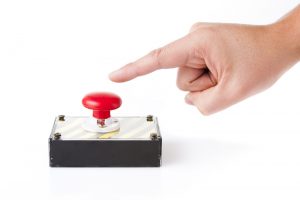Lexus Owner Sues for Shattered Sunroof
November 8th, 2016. By LucyC
 Own a Lexus? How’s the sunroof? Still there—intact? Maybe not for much longer…The luxury car maker got hit with a defective products lawsuit in October, over allegations its sunroofs spontaneously explode. That could certainly put a little excitement into your life. Several scenarios come to mind—none of them good.
Own a Lexus? How’s the sunroof? Still there—intact? Maybe not for much longer…The luxury car maker got hit with a defective products lawsuit in October, over allegations its sunroofs spontaneously explode. That could certainly put a little excitement into your life. Several scenarios come to mind—none of them good.
According to Ginger Minoletti, who filed the Lexus sunroof lawsuit, she was traveling in her Lexus RX 350 on a California highway when the sunroof glass started making a loud noise. Minoletti says it sounded like the glass was cracking. Later on, she said she found pieces of glass inside the shade of the sunroof. Lucky that was all.
Apparently, there’s some defect that causes the glass to just shatter. You don’t even need to hit it with anything first—no prompting required. If you were a superstitious person, and even if you’re not, this could be quite disturbing.
According to the lawsuit, the sudden and obviously unexpected nature of these explosions leave drivers bewildered and trying to come up with an explanation for their no doubt shocked passengers, who may well be covered in glass shards.
The website carcomplaints.com, cites reports by Lexus owners, one made by an owner of a 2007 Lexus RX 350 in Austin, TX: “Travel back from New Orleans to Austin Texas on I-10 out in the middle of nowhere traveling 70mph and the sunroof on my Lexus RX-350 exploded into a shattering disaster. If shade had been opened it could have been detrimental bodily injury to myself or my passenger.”
And another by an owner of a 2013 Lexus GS 350 in Houston, TX: “2 month old car, was driving to work on a highway. Sunroof exploded and also got thousands of scratches from the shattered glass. I don’t understand why it’s not covered by manufacturer – anyway it’s not possible to prove anything to them.”
And another by an owner of a 2011 Lexus CT 200h in Washington, DC ….”I was driving back from Boston to DC. Just north of Newark Airport, while driving at highway speeds (60mph) there was a very loud explosive noise. Then I noticed a lot of wind noise in the car. I pulled off at the next rest stop and discovered that my sunroof was shattered. I had to make three trips to the dealership to find out what was going on. It took them 7 days to finally tell me that they would not cover the damage.”
Ah, there’s another problem. Who pays for the sunroof? Not Lexus, apparently. Minoletti claims that’s what happened to her. She got stuck paying for all the repairs to the sunroof because Lexus said the work wasn’t covered under warranty.
The kicker, according to the lawsuit, is that Lexus and its parent company Toyota have been aware of this issue since 2012, but, predictably, have done nothing to warn consumers.
Although the proposed class action lawsuit currently concerns California Lexus owners only, owners across the country have complained about having no warning the glass was getting ready to disintegrate.
The Lexus exploding sunroof lawsuit was filed in the Superior Court of the State of California, County of Los Angeles – Ginger Minoletti v. Toyota Motors Sales USA Inc.
67,000 Panic Devices Recalled for Failure to Work
October 12th, 2016. By LucyC
 Interesting recall recently—a wireless personal panic device that fails to panic when you need it to. In fact, according to the Consumer Products Safety Commission report, the device can fail to operate altogether in times of crisis, so it “fails” to send a signal to the security system to which it is presumably linked, in case of an emergency. That certainly sounds helpful.
Interesting recall recently—a wireless personal panic device that fails to panic when you need it to. In fact, according to the Consumer Products Safety Commission report, the device can fail to operate altogether in times of crisis, so it “fails” to send a signal to the security system to which it is presumably linked, in case of an emergency. That certainly sounds helpful.
The description is very polite and clearly not meant to cause panic “The wireless personal panic devices can fail to operate, which could result in the device not communicating with the security system if activated in the event of an emergency.” You practically have to read this sentence twice to get the drift. Not alarming at all. (pardon the pun).
So what’s the deal? Does it freeze with fear? Major crises are not in its contract? Who knows. Suffice to say it’s all quite worrying, really. In fact, it could be enough to send you clean over the edge if you’re having or about to have a crisis. It’s also enough to send anyone who purchased one of these for an elderly relative into a state of serious concern. Not good. There you are—or your loved one—in the dark, alone, no way to get to a phone, or contact a passerby or neighbor and the device you purchased in good faith to support you this time of crisis goes: “ah, NO, sorry—not my job.” You can imagine, knowing how completely absorbing all this wearable technology is, that should this thing fail when you need it, you could become more obsessed by trying to get it to work than by the actual event that should have triggered its response.
Never mind the burglar, the chest pain, the mudslide, the 10 car pile-up on your front lawn, the creek that’s turned to class five rapids in your back yard—whatever it may be—the wrist-mounted Interlink device is giving the silent treatment or some kind of error message. And you’re wondering, “did I charge it properly—did I charge it at all? What if I turn it off then on again, or shake it? Oh, but now it won’t turn off, why is it so slow…no wait—there it goes. OMG—why is it so slow?”
Then your thought process is interrupted by the other reality. The emergency. Oh yeah, forgot about that. But maybe distraction is helpful? In any event, there you are in the dark, cold, silence. Just you, and your worthless, wireless personal panic device and the crisis, which presumably is now in full unfold mode. And you didn’t notice.
What are you going to do? Summon the Force? Wait and see if anyone comes? Hope someone else called 911?
Don’t panic—at least there’s the recall, and the fix. If you own one of these Interlogix® wireless personal panic devices, and apparently 67,000 of these devices have been sold across the U.S., the recommendation is that “Consumers should immediately contact their professional security system installer or monitoring company for a free inspection of their personal panic device and a free replacement device for those that fail inspection.” Probably best not to do this immediately—you might want to finish the crisis at hand before embarking on a new one with customer service.
Consumers should contact: Interlogix® at 800-394-4988 Monday through Friday, from 8 a.m. to 8 p.m. PT, email at , or online at www.interlogix.com and click on Customer Service for more information. These devices were sold, through professional security installers and distributors nationwide from May 2014 through January 2016 for about $35 to $50.
Touch Disease: What Happens when your iPhone Goes on Strike
October 4th, 2016. By LucyC
 So where do you start? Perhaps where the disease was first reported, to the best of our knowledge, that is. That might be a good place. Initially, that was among American users, now Canadians are jumping on the defective products bandwagon. If I’m not mistaken, it has also been reported in Europe. I am, of course, referring to the iPhone 6 and 6+ Touch disease. It’s changing the way Apple fans feel about their appendages. And not for the better. Seriously folks.
So where do you start? Perhaps where the disease was first reported, to the best of our knowledge, that is. That might be a good place. Initially, that was among American users, now Canadians are jumping on the defective products bandwagon. If I’m not mistaken, it has also been reported in Europe. I am, of course, referring to the iPhone 6 and 6+ Touch disease. It’s changing the way Apple fans feel about their appendages. And not for the better. Seriously folks.
Touch disease. An interesting term. But how else would you describe a complete non-response from an object that basically functions by touch? It’s a slave to the stroke, swipe and tap. Granted, calling it a disease might be taking things a little too far. But let’s roll with it.
The symptoms? Basically, no matter how often or how fondly you fondle your iPhone, it doesn’t respond. So, you can’t answer your calls, send texts, emails or anything else for that matter. The iPhone has had enough, wants a divorce, and half of the asset base. No, wait, I’m getting confused.
Maybe 6 and 6+ just want some time off, feel used, or perhaps, they want to be made properly. According to the lawsuits, the underlying problem—the cause of Touch disease—is the touchscreen controller chips in the phone’s motherboard. Allegedly, they aren’t properly secured and can malfunction with regular use.
As one tech journalist explains it, in his article entitled “The hell of owing an iPhone 6 with Touch disease” (ok, we are not talking the plague here, just to be clear) … “touch disease” is an iPhone 6 Plus flaw related to “bendgate” in which the two tiny “Touch IC” connectors, which translate touchscreen presses into a machine input, become unseated from the phone’s logic board. It can be recognized by flickering gray bars along the top of the phone, and is associated with intermittent or total touchscreen failure,” (Jason Koebler, Motherboard.com)
This catastrophe could result in thousands of people scouring the streets in search of pay phones (best of luck there), and reading newspapers on the subway to work. It’s also possible that spontaneous conversations between strangers may be reported as becoming more common. Parents may remember to put their children in the car before they leave to drive them to school. Book sales could increase, and Jeopardy could find itself inundated with contestant applications.
Or, Samsung Galaxy could corner the market. But then they have their own problems. Let’s not go there just yet.
Whatever happens, Apple could find itself in hot water over this one. Touch disease apparently presents with symptoms almost as soon as the warranty has expired. Not surprisingly, class action lawsuits have been filed in the US and also in Canada.
The allegations including freezing or not responding to touch commands. I wonder if yelling at it works…
The lawsuits claim that Apple was aware of the problem but, yes you guessed it, did nothing to remedy the problem. What’s that saying—if it’s broke don’t fix it, just keep calm and carry on? Something like that. Looks like that is the strategy here, hence the lawsuits.
So keep calm and carry on folks—join a lawsuit, buy a different phone, get a newspaper subscription—maybe by iPhone 15 Apple will have worked out all the kinks. Holding your breath is not advised.
The Case of the Vibrator that Knew Too Much?
September 20th, 2016. By LucyC
 Smart dildos? Be careful what you wish for.
Smart dildos? Be careful what you wish for.
Don’t really know where to start with this one, except to say, you just can’t make this stuff up. A federal wiretap class action lawsuit has been filed against a company that makes “sensual lifestyle products”—including vibrators. The lawsuit is brought by a woman who alleges her vibrator is recording the date and time of each use, together with her selected settings and email address. (Now that’s multi-tasking).
So, first thoughts? There must be something wrong—the product is defective. Realty check—no—the product is working just fine. In fact, just as intended. Next thought—how is this legal and who wants this information? I mean, Really??
The skinny is that the We-Vibe vibrator is made to be operated through a smartphone app. According to the lawsuit, in order to operate the We-Vibe, “users download defendant’s ‘We-Connect’ application from the Apple App Store or the Google Play store and install it on their smartphones.” Easy enough, do it on the subway on the way to work.
The concept behind this product, from the user’s perspective, is to enable the user and her partner, through a “connect lover” feature, to operate the vibrator by remote control using their smartphones, even when they are physically separated. So—down the street, another city—another continent. Maybe even from 35,000 feet up, in the friendly skies. And then there’s the whole distracted driving thing. Hah! The touch screen allows the users to control the type, frequency and intensity of vibrations through 10 modes on a promised “secure connection.”
I’m having a hard time imagining a room full of nerds working on this one. But, thinking about it, maybe not. Wonder how much research went into developing the settings? And how was the research done—or is it all just random? Is there a process for complaints—and can you send the product back if it doesn’t live up to expectations? I digress, but then again—is that even possible anymore?
Meanwhile, back in the basement, the “defendant fails to notify or warn customers that We-Connect monitors and records, in real time, how they use the device. Nor does defendant disclose that it transmits the collected private usage information to its servers in Canada,” according to the lawsuit. Why Canada? Because We Vibe is in fact made by Ontario-based Standard Innovation Corp.
Thinking of Ashley Madison now…another banner Canadian company.
But the really dark part of all this is, according to John Banzhaf, a public interest law professor at George Washington University Law School, who published an essay on this, if a hacker—whether a former lover or a total stranger—intrudes on the We-Vibe information, he or she could conceivably be charged with sexual assault or even rape. “Since the smart dildos are connected to the internet, and can be controlled by someone even on another continent, hacking is an obvious possibility and potential danger,” Banzhaf says. As one writer put it, this brings a whole new meaning to phone sex.
The complaint, filed in Illinois, claims violations of various state and federal laws, alleging violation of the U.S. Wiretap Act, the Illinois Eavesdropping Statute, and the Illinois Consumer Fraud and Deceptive Business Practice Act. It also states these violations constitute intrusion upon seclusion in Illinois, as well as unjust enrichment on their profits.
The plaintiff has an initial hearing scheduled for November 8. Be interesting to see if it makes it to that far.
Gripping stuff!!
Got a Samsung Washer Explosion Story?
September 9th, 2016. By LucyC
 Is the day to day grind getting you down? Fed up with doing the laundry? Try out a Samsung washing machine—it could put a little Kaboom in your life, and your walls and possibly send a family member to hospital. That’d liven things up!
Is the day to day grind getting you down? Fed up with doing the laundry? Try out a Samsung washing machine—it could put a little Kaboom in your life, and your walls and possibly send a family member to hospital. That’d liven things up!
Yup—Samsung has allegedly cornered the market in exploding, top loading washing machines. Unintentionally, of course. But they’re not really owning the whole issue, well, actually, no part of it all. So, a consumer fraud class action lawsuit has been filed. I know, I know, hard to believe. But Samsung cannot not know about this.
A superquick search on Google (that’s the search where Google finishes your sentence—so you know something’s going on) turns up not one, not two—but dozens of reports of these machines literally exploding. If you’re having a hard time imagining that—just wait. And these reports go back to 2015—possibly earlier. People from across the US–one of the latest out of Bandera, TX—have posted their experiences on You-Tube, local news stations have covered the phenomenon, and CPSC is collecting first hand reports. And amazingly enough, this doesn’t seem to have prompted any action at all—not even a recall.
One news source, applicanceertailer.com, ran the headline: “Samsung washing machines now exploding in the US.” What ? So they had finished their run in Europe? (who writes this stuff?)
One woman counts herself lucky, as she admitted watching her machine at work—literally standing over the glass lid—before it blew itself up. Actually, to be accurate, it blows its sides out, shakes the walls, causing shelving to jiggle and ornaments and pictures to fall. People have thought it was a canon going off, or an earthquake. But there are far worse accounts.
To quote the Applianceretailer.com story…
“The washing machine claimed to have “suddenly and without warning” violently exploded as it completed its final minutes of high-speed spin cycle.” Didn’t know the washing machine could speak as well, but hey—wouldn’t put much past these things.
The article goes on…
“The [Consumer Product Safety Commission] report reads, “The washer lid flew off the machine and slammed into the consumer on her lower back, causing the consumer to collide into a cabinet, where she struck her head, neck, upper body, chin and jaw.
“The entire washer lifted as much as six inches off the ground, spun 180 degrees, striking the consumer, damaging the wall and side of the dryer.”
Holy crap. Not to make light of the situation, but that sounds “Exorcist” worthy. Maybe they’re not defective, but possessed?
The article sites another two CPSC reports, one in which a consumer experienced not one but two explosions “that were felt across the entire house…” The story states that “A safety health and environment professional reported that “all technicians, safety professionals, engineers and laymen were completely impressed with the level of carnage.” Well then. An unfortunate choice of phrasing, but we take their meaning.
The other report indicates that the entire machine exploded and burst into pieces. “The entire top of the unit separated and flew into our hallway, and the unit continued to spin violently around the laundry room, ripping holes in our walls, dryer, cabinets and flooring.” Ok—that’s impressive. At some point you might start to wonder what you put on your Shreddies that morning.
So, no recall, several lawsuits, and some pretty alarming stories.
Wonder what happened to the clothes?
If you’ve experienced your own, personal Samsung exploding washing machine event—we’d love to hear from you.
Archive by Category
- Accidents (24)
- Airlines (9)
- Asbestos Mesothelioma (262)
- Automotive (25)
- Celebrity (14)
- Class Action (84)
- Complaints/Comments (15)
- Consumer Fraud (84)
- Contest (2)
- Court of Public Opinion (5)
- Crazy Sh*t Lawyers See (61)
- Criminal Law (4)
- Defective Products (111)
- DePuy ASR Hip Recall (2)
- Discrimination (22)
- Drugs/Medical (248)
- Elder Care Abuse (4)
- Emerging Issues (462)
- Employment (54)
- Environment (52)
- Financial (28)
- Food Illness (15)
- Human/Civil Rights (4)
- Insecurities (5)
- Insurance (16)
- Intellectual Property (16)
- Internet/E-commerce (19)
- lawsuits (161)
- Lawyers (20)
- Lawyers Giving Back (43)
- Lex Levity (10)
- Personal Injury (106)
- Pleading Ignorance (53)
- Real Estate (2)
- Recall (6)
- Scam (3)
- Securities (13)
- Settlement (81)
- Tort Reform (2)
- Totally Tortelicious (81)
- Veterans (11)
- Whistleblower (9)